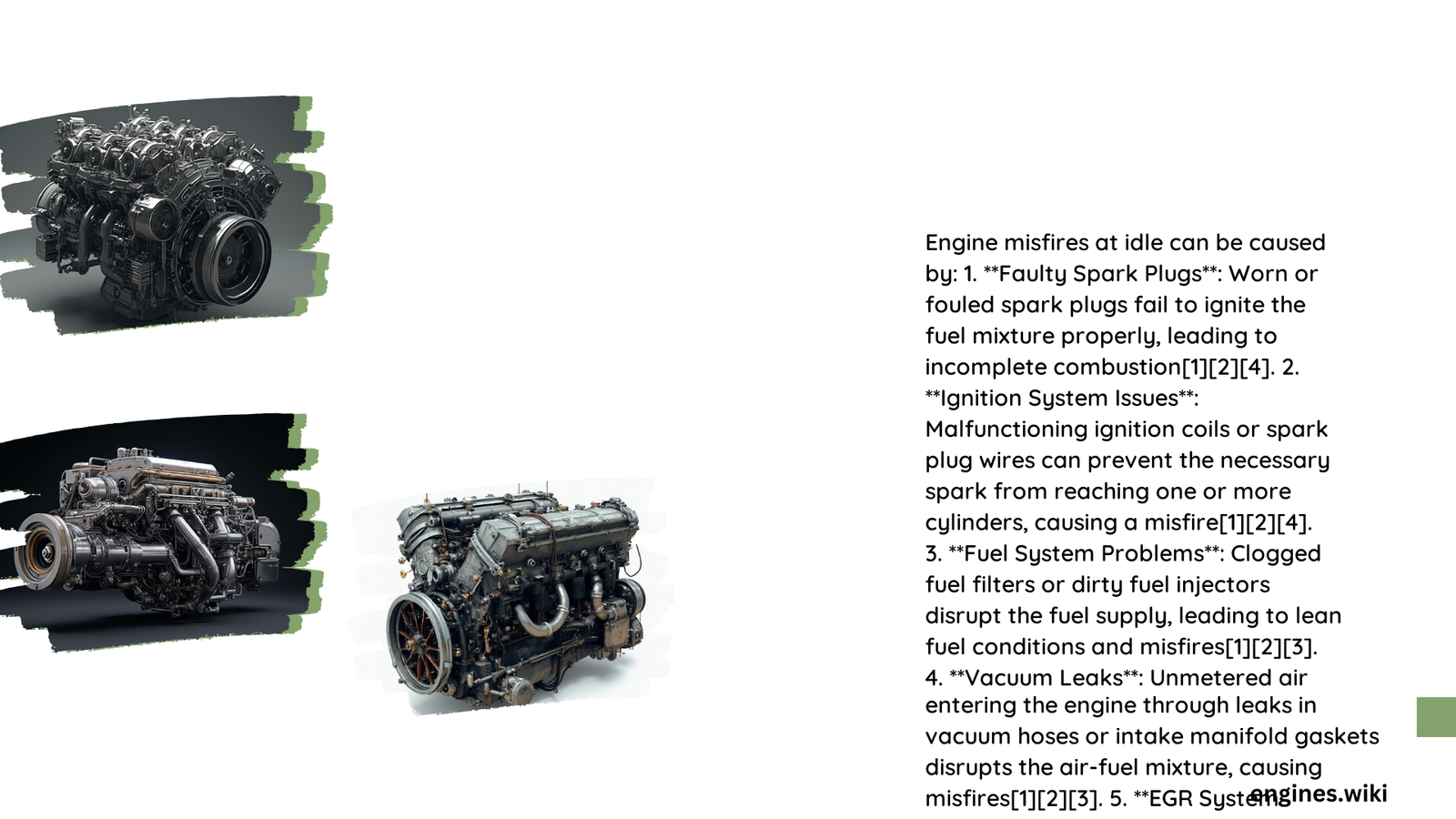Engine misfires at idle can stem from multiple complex mechanical and electronic issues that disrupt the precise combustion process. These problems range from worn spark plugs and faulty ignition coils to mechanical compression losses and sensor malfunctions, potentially causing significant performance degradation and potential long-term engine damage if left unaddressed.
What Are the Primary Mechanical Causes of Engine Misfire?
Compression System Failures
Compression losses represent a critical mechanical cause of engine misfires. These failures typically manifest through:
- Piston Ring Deterioration
- Reduces effective cylinder sealing
- Allows uncontrolled oil and air mixture
-
Decreases overall combustion efficiency
-
Cylinder Head Gasket Compromise
- Creates unintended pathways for coolant/oil
- Disrupts combustion chamber integrity
- Leads to unpredictable combustion patterns
Valve System Complications
| Component | Potential Issue | Impact on Misfire |
|---|---|---|
| Valve Seals | Degradation | Increased oil consumption |
| Valve Springs | Weakening | Inconsistent valve closure |
| Valve Surfaces | Scoring/Wear | Reduced compression efficiency |
How Do Electronic Systems Contribute to Misfires?

Ignition System Vulnerabilities
Electronic components play a substantial role in engine misfires:
- Spark Plug Deterioration
- Reduced spark intensity
- Inconsistent electrical discharge
-
Increased fuel consumption
-
Ignition Coil Malfunction
- Voltage transmission interruptions
- Uneven electrical distribution
- Potential complete cylinder shutdown
Sensor Performance Challenges
Critical sensors that influence misfire occurrence include:
- Mass Airflow Sensor (MAF)
- Oxygen Sensor
- Crankshaft Position Sensor
- Camshaft Position Sensor
What Diagnostic Strategies Reveal Misfire Causes?
Comprehensive Diagnostic Approach
Effective misfire diagnosis requires systematic evaluation:
- Retrieve Diagnostic Trouble Codes (DTCs)
- Use professional OBD-II scanner
- Identify specific cylinder misfires
-
Understand error code implications
-
Perform Compression Tests
- Measure cylinder pressure
- Compare against manufacturer specifications
-
Identify mechanical degradation
-
Electrical System Evaluation
- Test spark plug resistance
- Check ignition coil voltage
- Verify sensor electrical signals
Estimated Repair Cost Ranges
| Repair Type | Minimum Cost | Maximum Cost |
|---|---|---|
| Spark Plugs | $50 | $250 |
| Ignition Coils | $150 | $600 |
| Sensor Replacement | $100 | $400 |
| Comprehensive Diagnosis | $80 | $250 |
What Preventive Measures Can Minimize Misfires?
Maintenance Best Practices
- Regular scheduled maintenance
- Timely spark plug replacement
- Use high-quality fuel
- Monitor warning indicators
- Perform periodic compression tests
Warning Signs Requiring Immediate Attention
- Persistent rough idling
- Unexplained power loss
- Check engine light activation
- Unusual exhaust smoke
- Increased fuel consumption
Conclusion
Understanding the causes of engine misfire at idle requires a holistic approach combining mechanical knowledge, electronic diagnostics, and proactive maintenance strategies.
